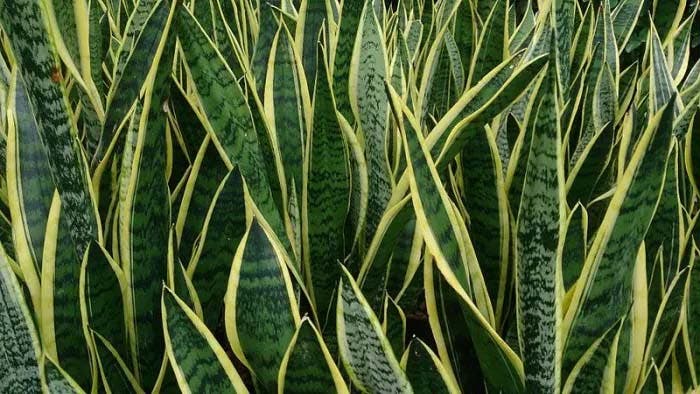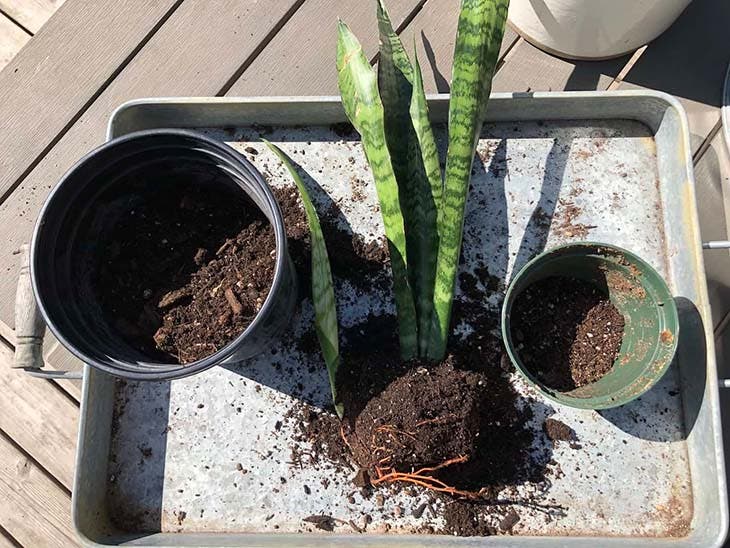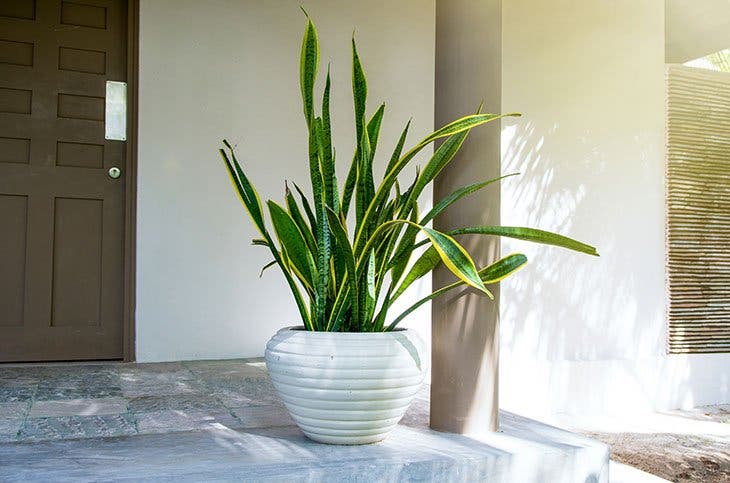ADVERTISEMENT
Mother-in-law’s tongue is a plant that has many names: Sansevière or sansevieria, devil’s tongue or snake plant. Not only is it a beautiful plant, but it’s also one of the easiest to grow and maintain. In this article, we share with you tips on how to make it bloom and enjoy its scents.
If we like the sansevière, it is because it is particularly robust and has the ability to survive even in poorly lit spaces. You should also know that it is a depolluting plant capable of absorbing harmful molecules such as formaldehyde, trichloroethylene and benzene that we find in our interiors. It is therefore one of the best plants for purifying the air.

Sanseviere Varieties
Sansevieria trifasciata: This is the most common and classic version of Sansevieria. It has thick, strict leaves whose length varies between 30 and 60 cm. Its colours turn to dark green or silver grey.
Sansevieria trifasciata golden hahnii: This is the smallest variety of sansevières. It is characterized by 10 cm wide leaves in which you can see a gray band surrounded by two other yellow ones.
Sansevieria trifasciata laurentii: The only difference between this plant and Sansevieria trifasciata is the line that delimits its leaves.
Sansevieria cylindrica: As the name suggests, it is a cylindrical plant whose leaves are rolled up on themselves or intertwined. Due to its particular aesthetics, it is a plant appreciated by supporters of modern decoration.
Sansevieria trifasciata argentea: Again, as the name suggests, its leaves are characterized by a silvery color.
These varieties are also part of houseplants that don’t necessarily need the sun to grow.

Plant Care
Since sansevière is an undemanding and hardy plant, it only requires a few steps to maintain. The first is to expose it to a brightness without it being in direct sunlight.
In fact, if it needs light, too much sun will only alter the foliage, which will dry out and turn yellow over time. If, on the other hand, it can survive in dimly lit places, it is ideal to place it indoors near a bright area such as the window and provide it with an ideal room temperature between 18 and 21°C.
Repotting
If you notice that the roots of the plant are starting to invade the pot or if it has exceeded a period of 3 years, it will need to be repotted. For this, just switch to a pot 2-3 cm larger than the previous one in terms of diameter. Next, choose a quality potting soil whose composition promotes quality drainage.

irrigation
While this plant works well with intermittent watering, too much water will only cause it to rot. It is recommended to water once the soil is dry.

Taking into account the growth phase of the sansevière which runs from March to June, gradually increase the frequency of watering. Either way, you can stick to regular watering depending on the soil’s water needs.
For the summer period between June and September, the plant should be watered once a week knowing that you can place it outdoors but without exposing it to direct sunlight.

For the following months, from September to November, we will return to less frequent but no less regular watering. During this time, the snake plant gradually enters the dormant phase that will take place in winter and will therefore only need monthly watering. As you may have guessed, sansevière generally prefers a dry environment.
Fertilizers
If you want to add fertilizer, you can settle for liquid fertilizer intended for green plants. Keep in mind, however, that if you add potting soil regularly, you won’t need fertilizer.
Take care of the leaves
To keep the leaves, no rocket science. You will only have to cut them off as soon as you notice that they are drying out. To dust the plant, a soft, damp cloth is sufficient.
Cuttings
To multiply the mother-in-law’s tongue, take advantage of the repotting to divide the tufts. To do this, cut the root ball into 2 or 3 parts and then replant them in another substrate. This is the best method to encourage the multiplication of the variegated foliage variety.
Now that you know how to enjoy beautiful sansevières, you can also consult the 7 gardening secrets to have beautiful plants at home.
ADVERTISEMENT
ADVERTISEMENT
